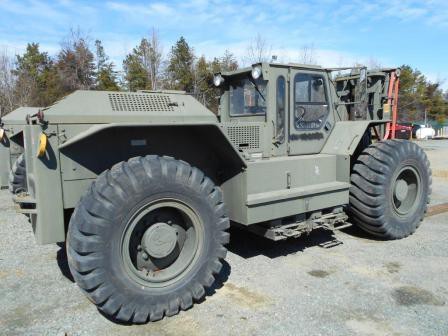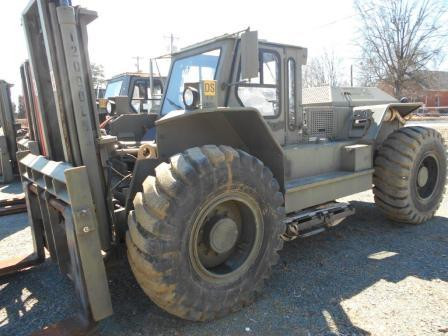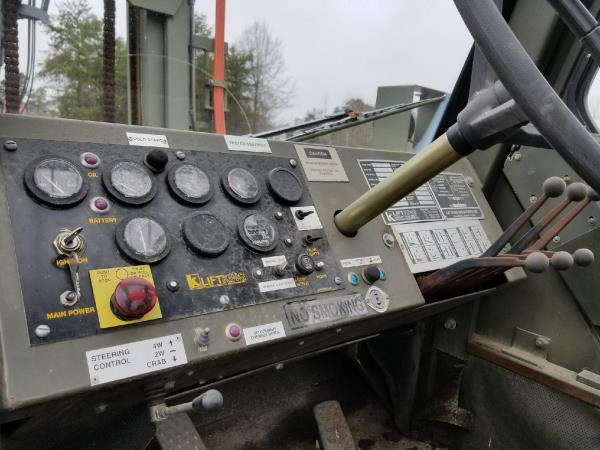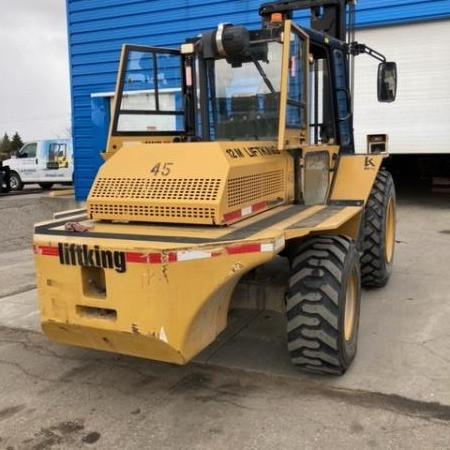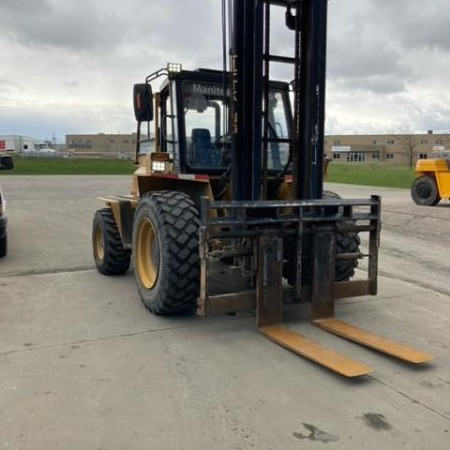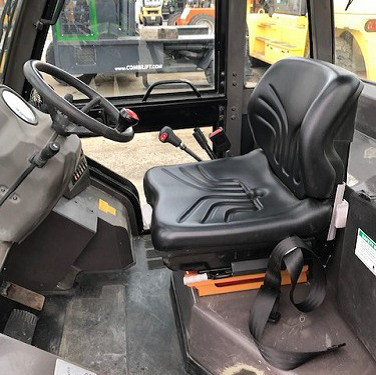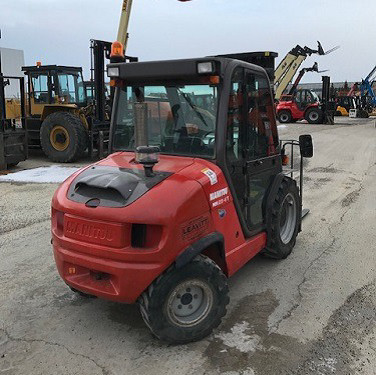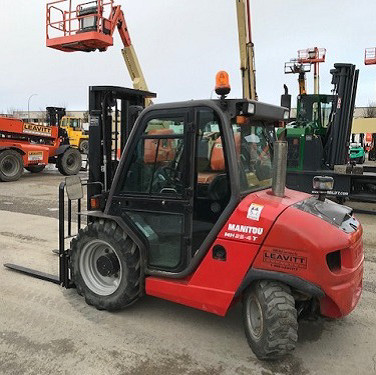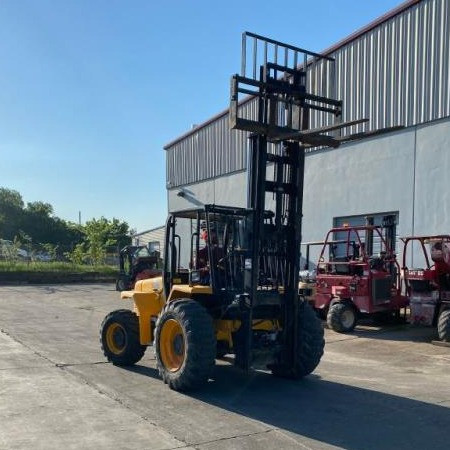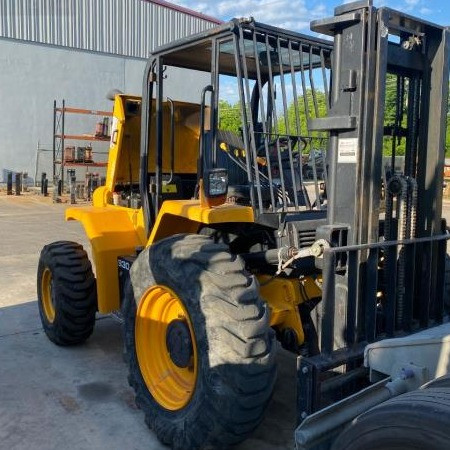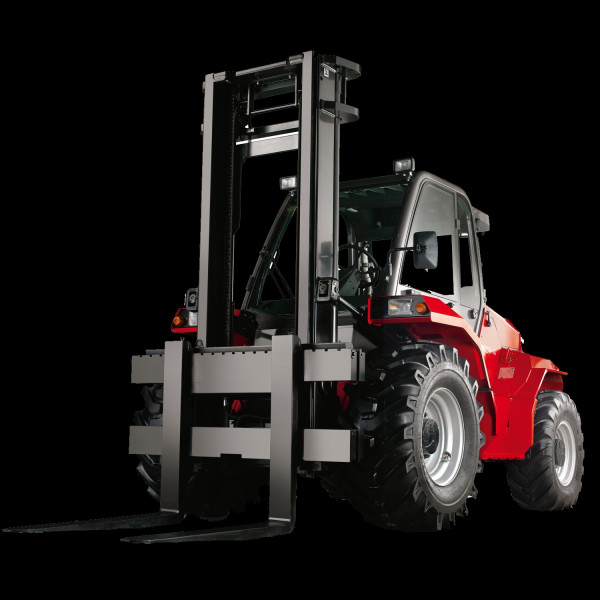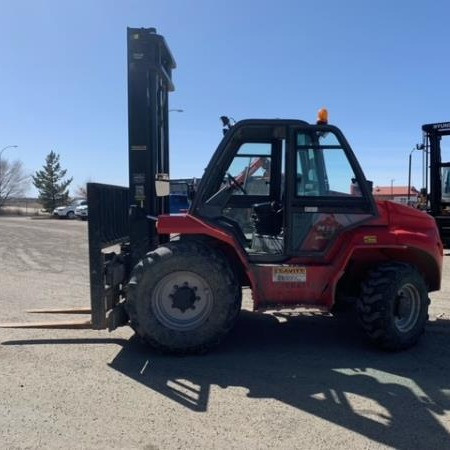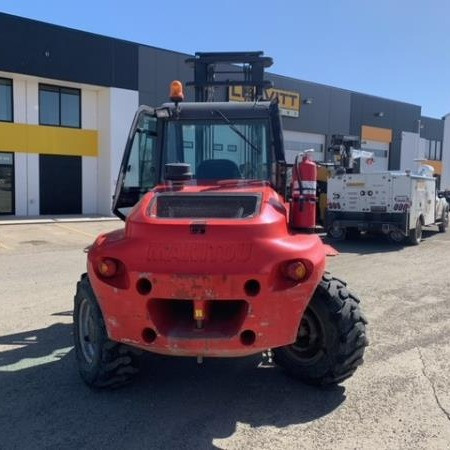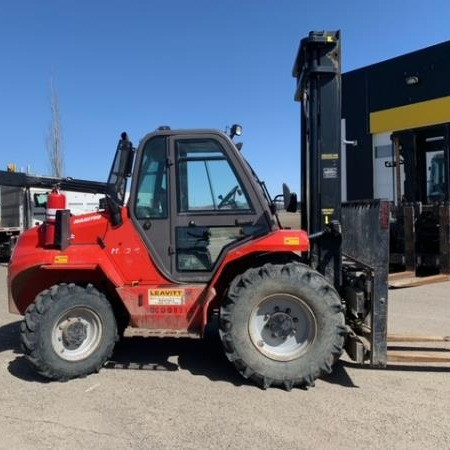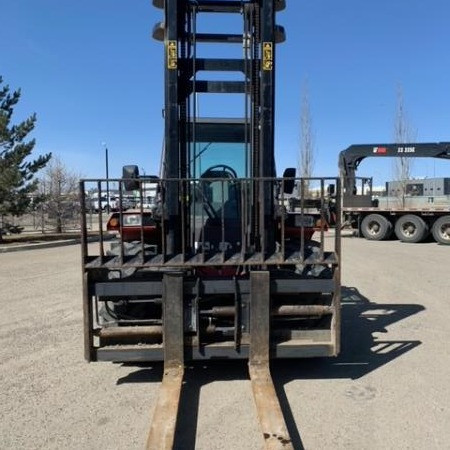Rough Terrain Forklift Fontana
Used Rough Terrain Forklift Fontana - Forklifts rely on two forks to unload, load and transport items. The rough terrain forklift and the industrial forklift are the two main types of forklift trucks.
The first category of forklifts, industrial forklifts, are mostly used in warehouses and at loading docks on surfaces that are relatively smooth and level. Rough terrain forklifts are better suited for rocky environments and uneven surfaces. Commonly found at exterior construction sites, rough terrain forklifts have the tires, size and weight capacity to handle heavy loads. The tire type is one of the key differences between rough terrain and industrial forklift units. Common road tires, cushion tires are the main kind found on industrial forklifts. Rough terrain forklifts, on the other hand, are fitted with pneumatic tires, a type of tractor tire allowing for better traction and flotation properties. Industrial forklifts are commonly powered by internal combustion engines although a fuel cell or battery electrical source may be used. Internal combustion engines are mainly used by rough terrain units.
Types of Class 7 Rough Terrain Forklift Trucks
The three types of Class 7 Rough Terrain Forklift Trucks include the rotating telehandler forklifts, telehandler forklifts and straight mast forklifts.
Regardless of its type, all rough terrain forklift trucks are designed to handle, as their name suggests, natural rough terrain and disturbed rough terrain typical of construction and military sites. Rough terrain forklift units have better performance and maneuvering options. In the case of rough terrain forklift operations, extra consideration must be given while raising loads in these rough, variable conditions to prevent tip-over. The machine needs to remain in a stable position prior to lowering, lifting or moving any items. Rough terrain forklift operators must practice correct lifting techniques to remain stable on the ground.
Straight Mast Forklifts
Straight mast forklifts are designed to transport building materials around a range of rough terrain sites such as demolition and construction sites. Better accessibility and maneuverability are offered by these units thanks to their pneumatic cushion tires. Pneumatic tires allow the machine to successfully traverse difficult terrain. It is common for straight mast forklifts to come with 2-wheel or 4-wheel drive. Most straight mast forklifts are powered by diesel or propane fuel, allowing them to be used indoors for short periods but are more suited to outdoor applications. The lift capacities of straight mast forklifts are similar to most standard forklifts with a range of approximately 5,000 to 36,000 pounds.
Telehandler or Telescopic Handler Forklifts
Telehandler or telescopic handler forklift trucks are equipped with a telescoping boom, giving them their name. This telescoping boom allows the forklift truck to pick up and place loads at various distances and lift heights in front of the machine. The operator can achieve enhanced flexibility with better reach during load placement.
A standard telehandler forklift is long and low, with two wheels at the very front of the forklift and another pair of wheels toward the rear of the machine. The telescopic boom can be found at the back of the forklift, mounted on a pivot that is attached many feet higher than the frame of the unit. The left side of the machine houses the cab and the hydraulic fluid tank and the fuel tank are found opposite to the cab. The forklift engine and transmission are situated along the center of the machine. This popular design showcases a balanced forklift which is ideal for the machine’s stability with lifting, moving and lowering items.
Telehandler forklifts provide much greater lift heights when compared to a standard forklift. Otherwise known as high-reach telehandlers or compact telehandlers, these models perform. Compact telehandlers can extend their full load capacity from eight-teen feet and the high-reach models to fifty-six feet. Their load capacities usually range between 5,500 and 12,000 pounds.
All-terrain forklifts often include all-wheel steering which allows for greater maneuverability. This, along with power shift transmission and other steering features, means that the operator can move the lift in as close proximity to the work area as possible.
The latest telehandler models feature ergonomic upgrades for ultimate operator comfort. Operator comfort is enhanced via larger cabs and tilted steering. These ergonomic upgrades have been shown to lessen repetitive stress injuries and lessen operator fatigue.
Most telehandler forklifts rely on a single joystick. The joystick is responsible for the hydraulic system and the boom operations.
Telehandler forklifts can also be equipped with non-marking tires which allow them to be used in other applications such as the installation of signs and billboards as well as maintenance on buildings and stadiums.
Rotating Telehandler or Roto Telescopic Handler Forklifts
Rotating telehandler or roto telescopic handler forklifts have many features in common with the standard telehandler forklift. These include the rotating telehandler’s ability to lift heavy weight to great heights. However, these forklifts have the added ability to rotate the forklift on a turntable. The rotating function allows the forklift to swivel a full 360 degrees around, enabling access a much larger work area without having to reposition the forklift.
Because of this additional feature, rotating telehandlers often have a second joystick to allow operation of the rotation function apart from the lift function. Useful additional features may be added to your standard telehandler or rotating telehandler including 4WD, increased traction via minimized slip differential on the rear axle, and power-assist steering.
With the added rotating ability of these forklifts, comes additional safety considerations. Stabilizers are a rough terrain forklift feature that rotating telehandler models rely on to increase safety while handling rotating loads that are swinging back and forth from each side of the machine. Certain rotating telehandlers operate without stabilizers; minimizing the time it takes to reposition the machine and move to other workplace locations.
Rotator telehandlers are usually smaller than their fixed cab counterparts, the standard telehandler. Understandably, rotator telehandler machines can handler smaller load capacities compared to their standard telehandler counterparts. Rotating telehandlers offer load capacities ranging from 4000 to 10,000 lbs. and lift heights between fifteen to eighty feet.
Both telehandlers and rotator telehandlers can be used as a crane when fitted with a winch attachment. These units can enable job sites that require a crane to get the job done without having to rent and transport a separate machine.
Advancements for Rough Terrain Forklifts
Numerous attachments can be found for rough terrain forklifts including articulating booms, rotating fork carriages, booms, winches and similar items. Because of the importance of forklift attachments in their ability to adapt forklifts to many different types of specific jobs, it is expected that the creation and availability of new rough terrain forklift attachments will continue to increase.
However, the bulk of advancements are expected to be in the form of safety features, built-in to manufactured rough terrain forklifts. Some new safety features have already been developed such as automatic load restriction devices. This system weighs a load automatically and then calculates the safe reach distance of the load while considering the extension and boom angle. An alarm sounds once the safe distance is reached, warning the operator to make load weight, reach distance or boom angle adjustments.
Rough Terrain Forklift PDF
Stock Number: 267846 GL
Make: Liftking
Model: LK12000
Year: 2003
| Stock Number |
267846 GL |
| Make |
Liftking |
| Model |
LK12000 |
| Year |
2003 |
| Category |
Rough Terrain Forklift |
Stock Number: 209058 GL
Make: LIFTKING
Model: LK12M42
Year: 2015
| Stock Number |
209058 GL |
| Make |
LIFTKING |
| Model |
LK12M42 |
| Year |
2015 |
| Category |
Rough Terrain Forklift |
Stock Number: DP-MAN008 GL
Make: MANITOU
Model: MH25-4T
Year: 2016
| Stock Number |
DP-MAN008 GL |
| Make |
MANITOU |
| Model |
MH25-4T |
| Year |
2016 |
| Category |
Rough Terrain Forklift |
Stock Number: LS15257 GL
Make: JCB
Model: 930
Year: 2013
| Stock Number |
LS15257 GL |
| Make |
JCB |
| Model |
930 |
| Year |
2013 |
| Category |
Rough Terrain Forklift |
Stock Number: 208325 GL
Make: MANITOU
Model: M50.4
Year: 2015
| Stock Number |
208325 GL |
| Make |
MANITOU |
| Model |
M50.4 |
| Year |
2015 |
| Category |
Rough Terrain Forklift |
Stock Number: EQC008213 GL
Make: MANITOU
Model: M50
Year: 2017
| Stock Number |
EQC008213 GL |
| Make |
MANITOU |
| Model |
M50 |
| Year |
2017 |
| Category |
Rough Terrain Forklift |




